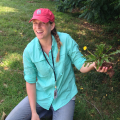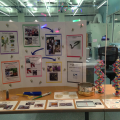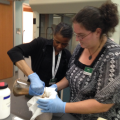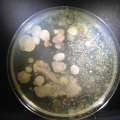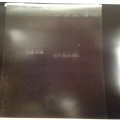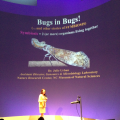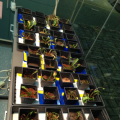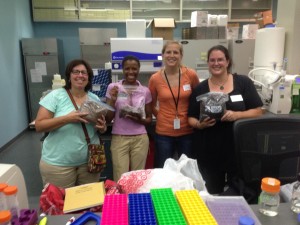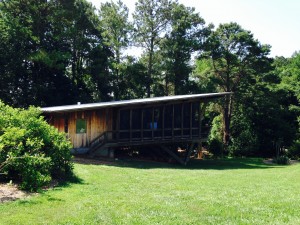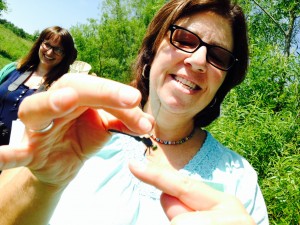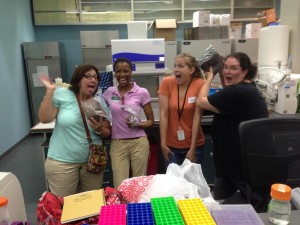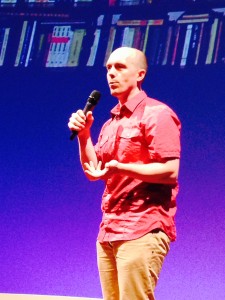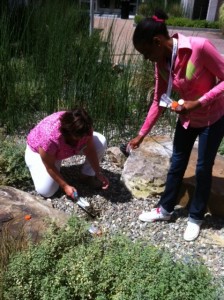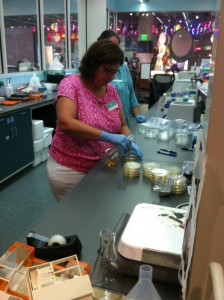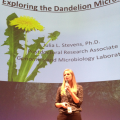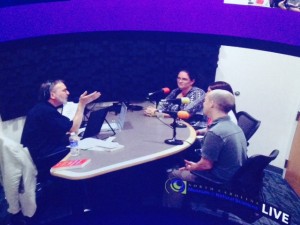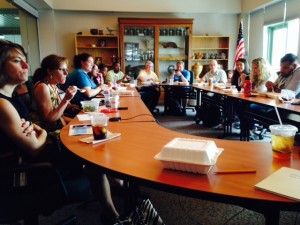My Students Discover Team, nicknamed Team Dirt, worked in the Genomics Lab of the NC Museum of Natural Sciences. We were working on the Citizen Science Project entitled Muddy Microbes. Our team consisted of myself, 6th grade science teacher, Arthina Blanchard, 7th grade math teacher, and Amy Lawson, 8th grade science teacher. Team Dirt worked very well together during our three week externship at the science museum. We learned many new skills and had excellent opportunities to enrich ourselves as teaching professionals both in the lab and also conducting field work.
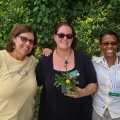
Our first challenge when writing our curriculum is taking the lab work like DNA extraction, gel electrophoresis, and PCRs and relating those skills to a middle school classroom. We obviously don’t have the equipment to actually do these activities in the classroom, nor is that the intent. With the help of our mentors in the lab we identified activities that can be adapted to the middle school classroom. We will also continue to have access to the museum lab and will send our citizen science work to the lab and receive data back that we can then analyze and use in our classrooms.
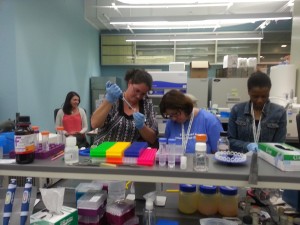
Throughout the three weeks while working in the lab, our team would brainstorm ideas about curriculum and identify different ways we could bring this experience back into the classroom. During the last week when we actually began putting pen to paper and writing our curriculum the biggest challenge was trying to incorporate all three grade level’s standards into our lesson. We decided to write our curriculum unit entitled DIRT IS ALIVE beginning with a lesson that all three of us could teach at the beginning of the year -Diggin’ Dandelions. Implementation of this lesson will introduce Citizen Science to our students and set the tone for the entire year. We then identified standards in each of our grade levels that can be taught using the Citizen Science project. We are each working on lessons that can be taught in our grade that align with our specific curriculum as part of the Dirt is Alive unit. For example I will have two additional lessons (What is Soil and Biomes Around the World) that will be taught later in the year that connect to the Citizen Science Project.
Writing curriculum can be overwhelming and when we first started I wasn’t sure how we were going to make all three grade levels fit into our Dirt is Alive unit. I now see a clearer picture of how this will work. I think having all three grade levels incorporated will add depth to the unit. I love the idea of starting with the Diggin’ Dandelions lesson that we have submitted as our unit draft and then adding the additional lessons for each grade level that will be taught under the Diggin’ Dandelions umbrella. This will allow the students to continue connecting to the Citizen Science Project throughout the year.

